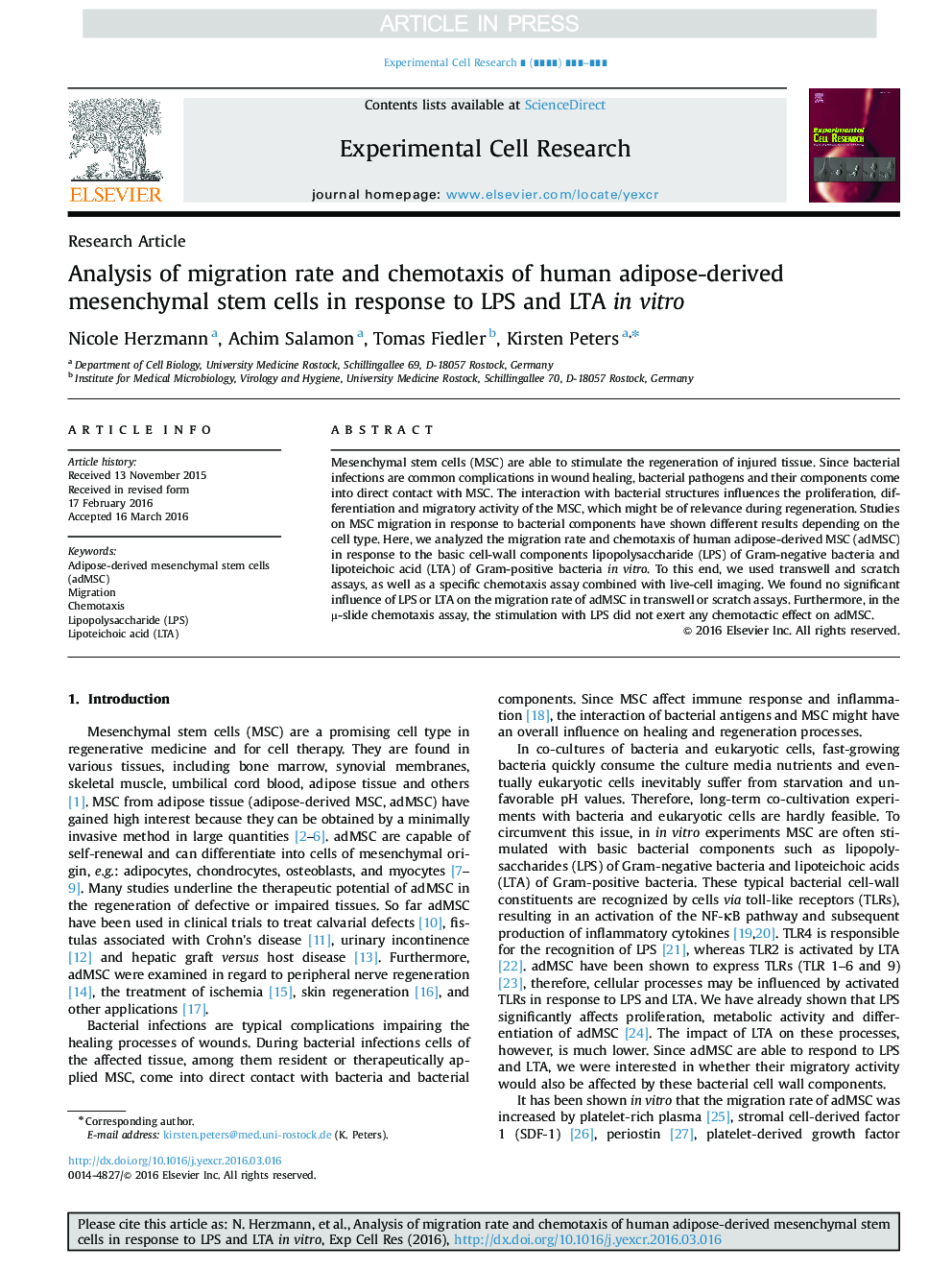| Article ID | Journal | Published Year | Pages | File Type |
|---|---|---|---|---|
| 10903719 | Experimental Cell Research | 2016 | 9 Pages |
Abstract
Mesenchymal stem cells (MSC) are able to stimulate the regeneration of injured tissue. Since bacterial infections are common complications in wound healing, bacterial pathogens and their components come into direct contact with MSC. The interaction with bacterial structures influences the proliferation, differentiation and migratory activity of the MSC, which might be of relevance during regeneration. Studies on MSC migration in response to bacterial components have shown different results depending on the cell type. Here, we analyzed the migration rate and chemotaxis of human adipose-derived MSC (adMSC) in response to the basic cell-wall components lipopolysaccharide (LPS) of Gram-negative bacteria and lipoteichoic acid (LTA) of Gram-positive bacteria in vitro. To this end, we used transwell and scratch assays, as well as a specific chemotaxis assay combined with live-cell imaging. We found no significant influence of LPS or LTA on the migration rate of adMSC in transwell or scratch assays. Furthermore, in the µ-slide chemotaxis assay, the stimulation with LPS did not exert any chemotactic effect on adMSC.
Related Topics
Life Sciences
Biochemistry, Genetics and Molecular Biology
Cancer Research
Authors
Nicole Herzmann, Achim Salamon, Tomas Fiedler, Kirsten Peters,
